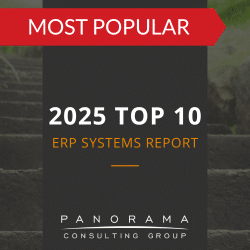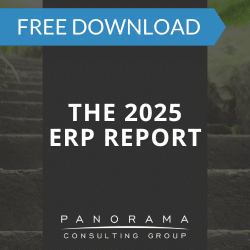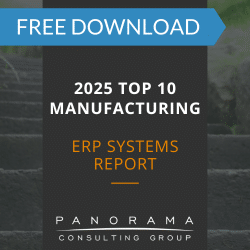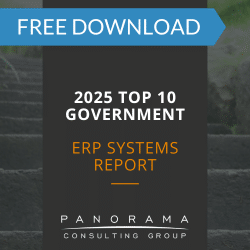Implementing an enterprise resource planning (ERP) system is an important step for organizations hoping to integrate their processes in a single platform.
However, the journey can be fraught with challenges, notably data quality issues that can impact the effectiveness of the ERP solution.
Understanding these issues, their potential implications, and strategies to mitigate them is critical if you’re about to head down this transformative path.
Understanding Data Quality Issues in Implementing an ERP System
Data quality is a multifaceted concern within ERP implementations. Following are some common issues organizations face:
1. Incomplete Data
Data completeness is essential for the ERP system to function effectively. Incomplete data can lead to gaps in reporting, affecting decision-making and strategic planning.
To avoid ERP failure, be sure to develop a data governance framework. Establish clear policies, roles, responsibilities, and standards for data quality across the organization.
A Failed Payroll System Implementation
Panorama’s Expert Witness team was retained to provide a forensic analysis and written report to the court regarding the failed implementation of a major software developer’s ERP/payroll system.
2. Inconsistent Data
Before transferring data to the new ERP system, it is crucial to clean your data. This involves fixing errors, deleting duplicates, and ensuring all data is in a consistent format.
For example, a company we helped after a merger had issues with different product data in two old legacy systems. Product names, descriptions, and categorizations did not match, leading to confusion in inventory management, sales reporting, and customer orders.
We initiated a data standardization project. We established a team to create a unified product catalog with standardized naming conventions, descriptions, and categorization schemes. The team utilized data mapping and transformation tools to merge product data into a single, consistent database within the new ERP system.
3. Data Accuracy
Accurate data is the backbone of reliable ERP operations. Data inaccuracies can stem from human error, outdated information, or faulty data migration.
For instance, a retail chain might discover that their ERP system contains outdated supplier contact information and contract terms. To address this, the retailer could implement a supplier information management system that integrates with the ERP system. The system could also be configured to alert procurement managers when contracts are due for renewal.
4. Data Validity
For data to be useful, it must be valid based on predefined criteria and business rules.
It’s important to ensure that employees understand the importance of data quality and are trained in best practices for data entry, maintenance, and reporting.
A technology company we worked with noticed discrepancies in its sales reporting related to incorrect product codes. We helped the firm introduce validation rules within their ERP system to ensure that only existing product codes could be entered into sales orders.
Then, we organized training sessions to educate the sales team on the importance of accurate data entry and how to avoid common mistakes.
5. Data Integrity
Ensuring that data remains accurate throughout its lifecycle is critical for maintaining employee trust in ERP outputs.
For instance, a healthcare provider might face data integrity issues when migrating patient records to a new ERP system. If there are differences in data structures between the old and new systems, some patient records could be duplicated, while others could end up with mismatched treatment histories.
In this instance, the healthcare provider should use data integrity checks to identify and correct discrepancies before migration. A data governance committee should oversee the migration process, establishing rules for data mapping and transformation to ensure consistency and integrity.
Post-migration, the organization should consider employing data validation techniques to verify the accuracy and completeness of the migrated data.
Avoid Data Quality Issues in Implementing an ERP System
Bad data can be a big problem. If you’re on the cusp of a digital transformation, it’s important to make sure you’re working with data that meets each of the five dimensions described above.
You can avoid most data quality issues in implementing an ERP solution by creating validation rules and cleansing your data it before it enters the new system.
Our ERP implementation company can help you prepare for ERP data migration early in your project. Contact us below for a free consultation.















